Abstract
1. Responses of Golgi tendon organs isolated from cat tail muscles to contraction of muscle fibers inserting directly into the receptor (GTO-muscle fibres) as well as to pulses of electrical current applied extracellularly through the sensory axon were studied. 2. Analysis of the responses to GTO-muscle fibre contraction indicated that the active force developed by each muscle fibre constituted an equally potent input to the receptor in proportion to the developed force. 3. The sensitivity of a Golgi tendon organ remained almost constant with changes in muscle length up to a length where maximum active tension was developed (lo). Beyond lo, the sensitivity tended to decrease. 4. The absolute force threshold (passive + active) at 1o for initiating an impulse in the afferent nerve was estimated for five preparations to be 4.5-14 mg. It was also demonstrated that the contraction of a single GTO-muscle fibre may initiate impulse discharge from the receptor. 5. A constant depolarizing current applied extracellularly to a GTO through its axon initiated a train of impulses, probably originating from a site near or within the receptor capsule. Analysis of responses to constant currents of various intensities suggested that a single impulse initiation site was involved. 6. During combined stimulation, responses of a tendon organ to GTO-muscle fibre contraction simply added to the response initiated by a constant current pulse, suggesting that the impulse initiation sites activated by each mode of stimulation were identical, or situated very close to each other in the nerve terminal.
Full text
PDF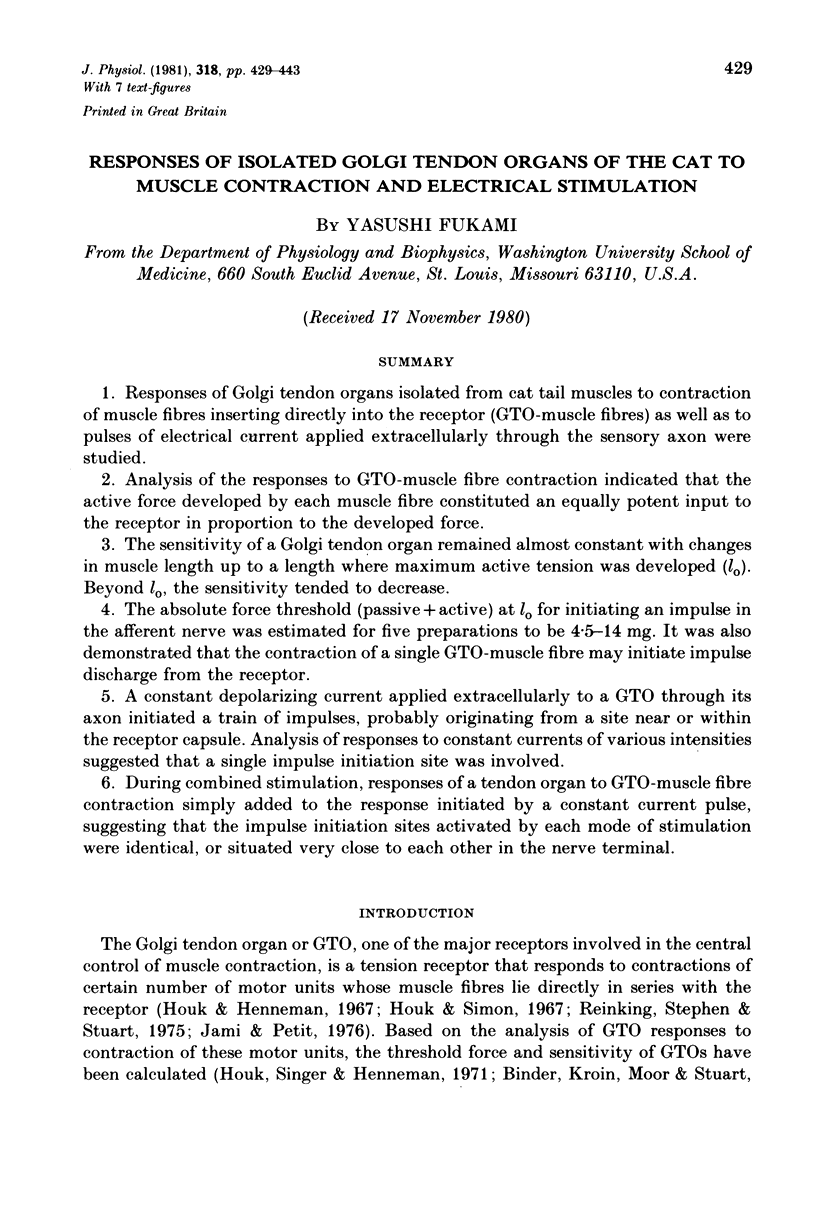
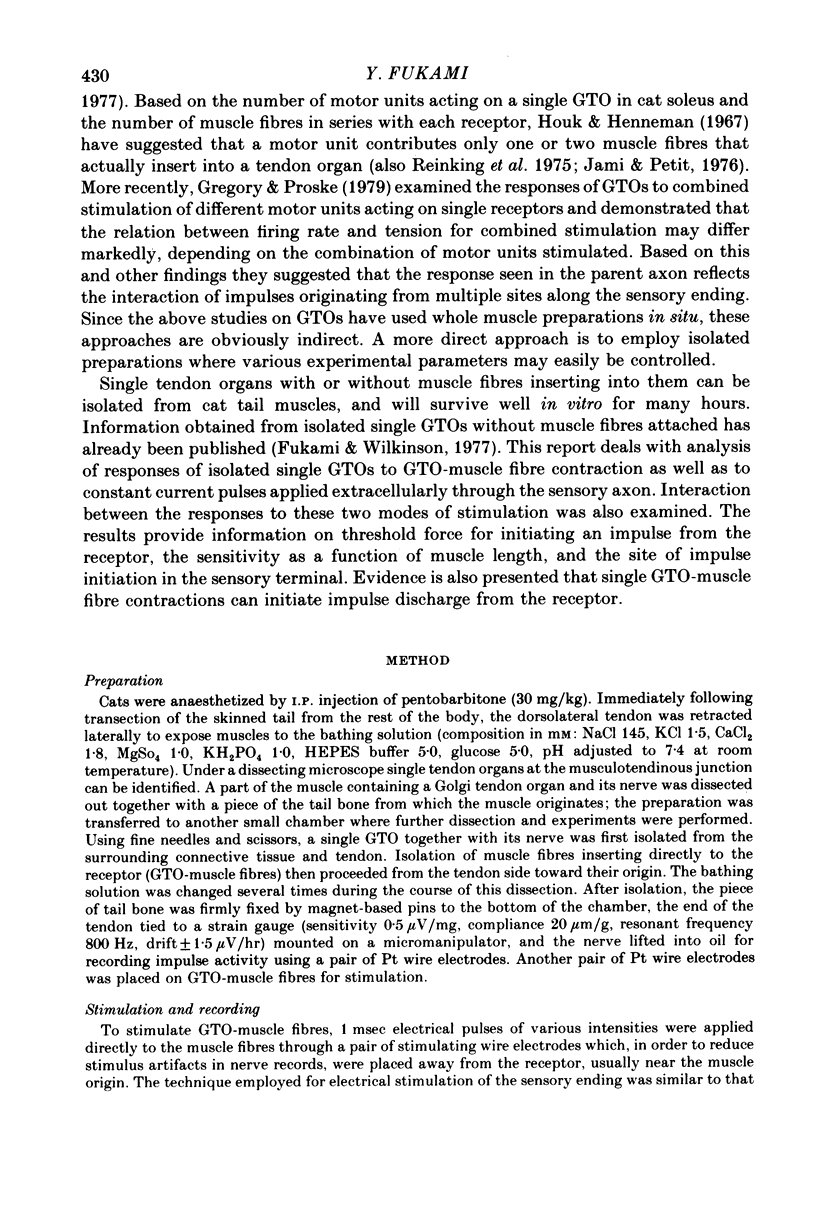
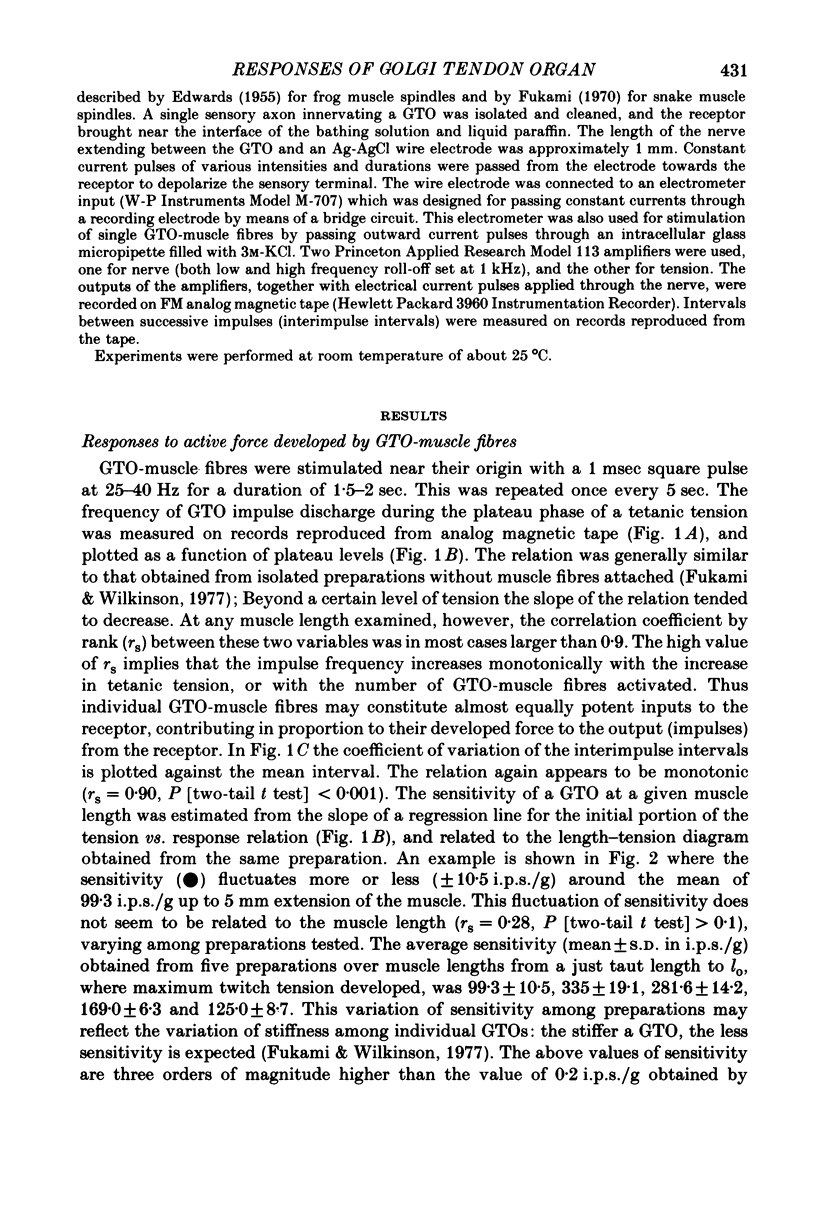
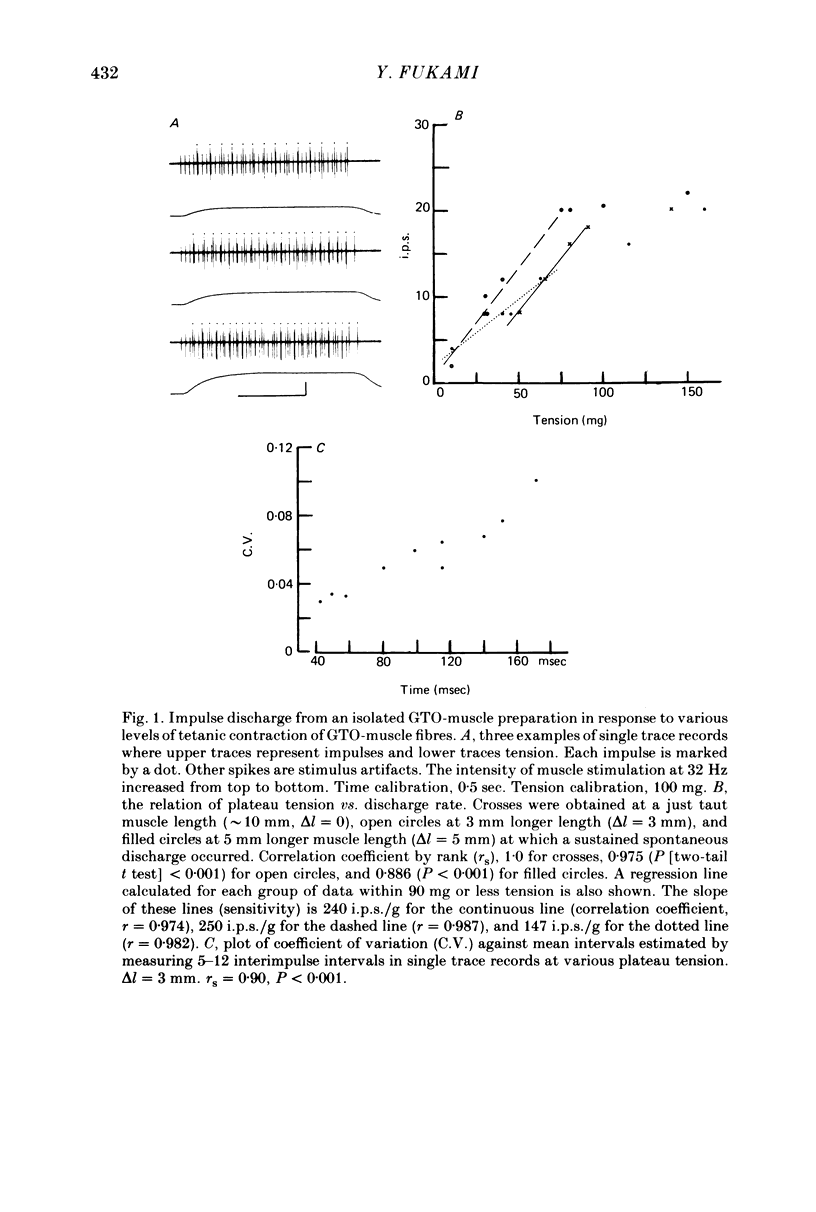
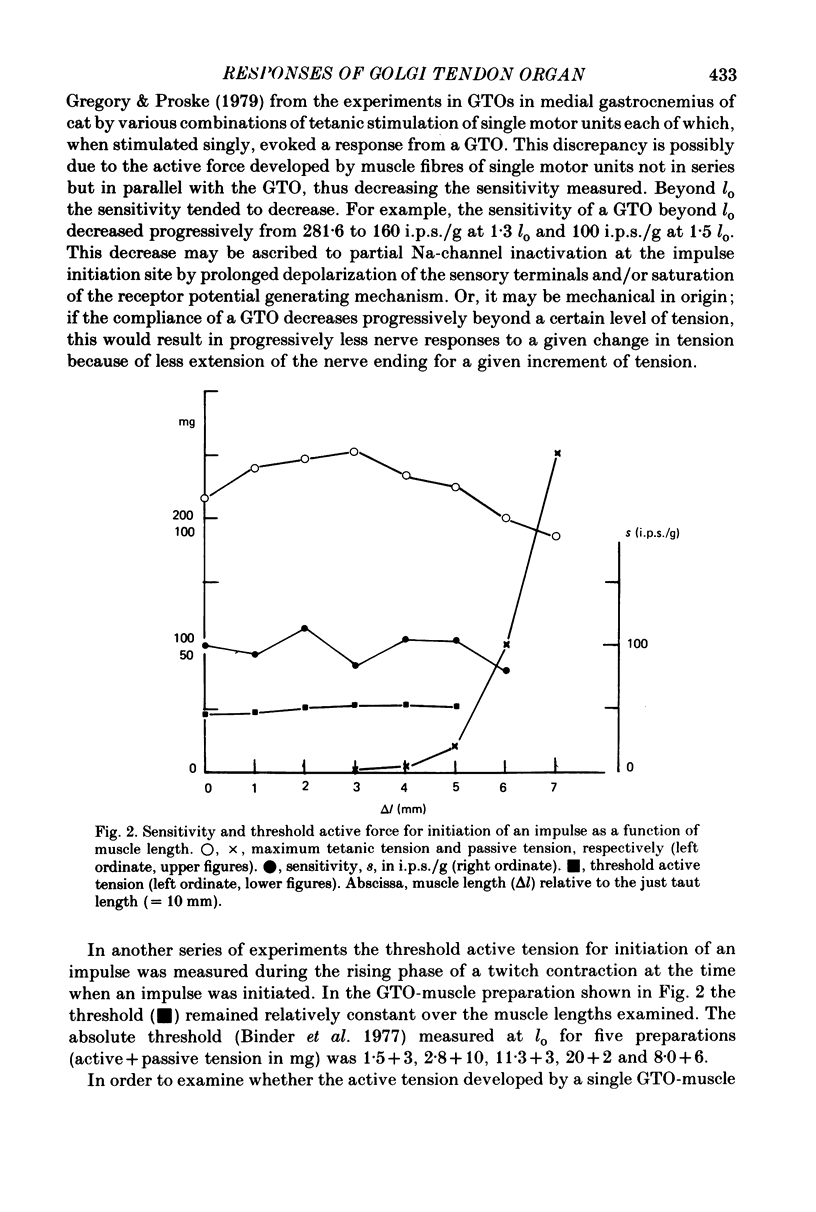
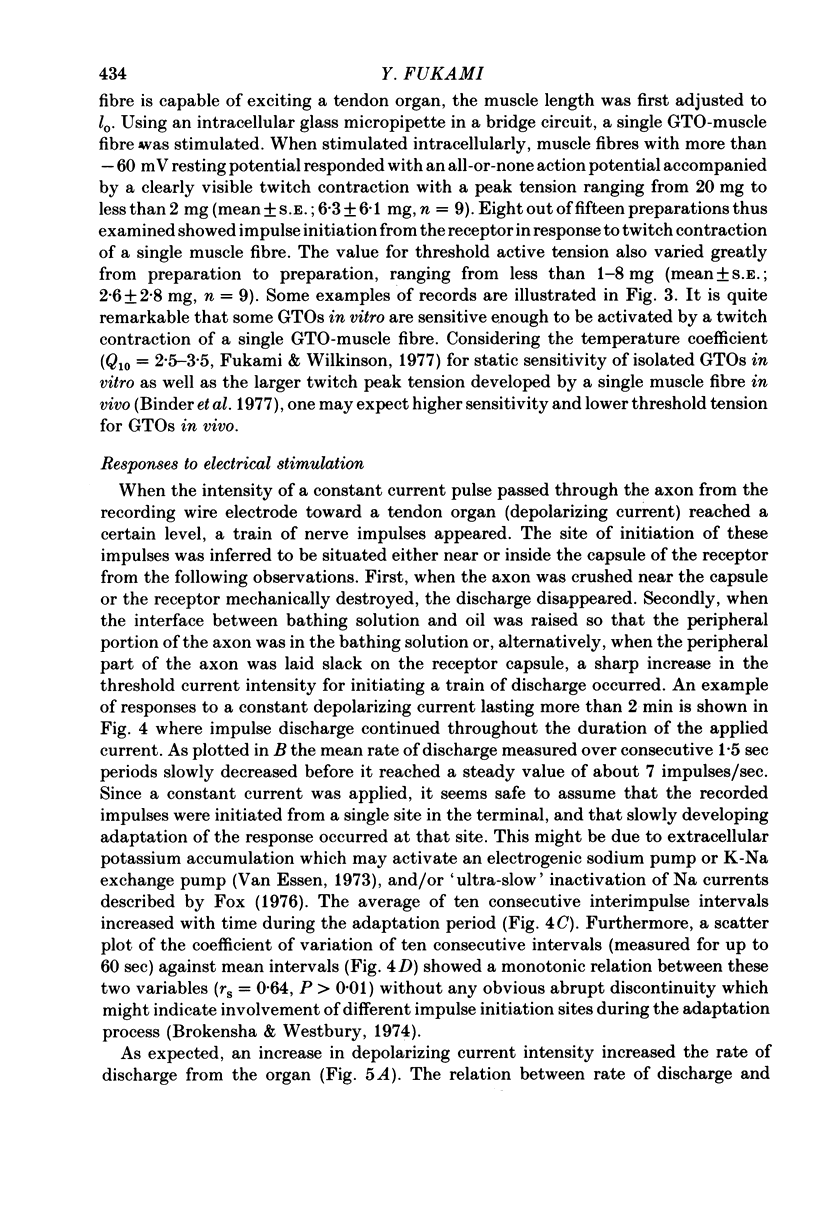
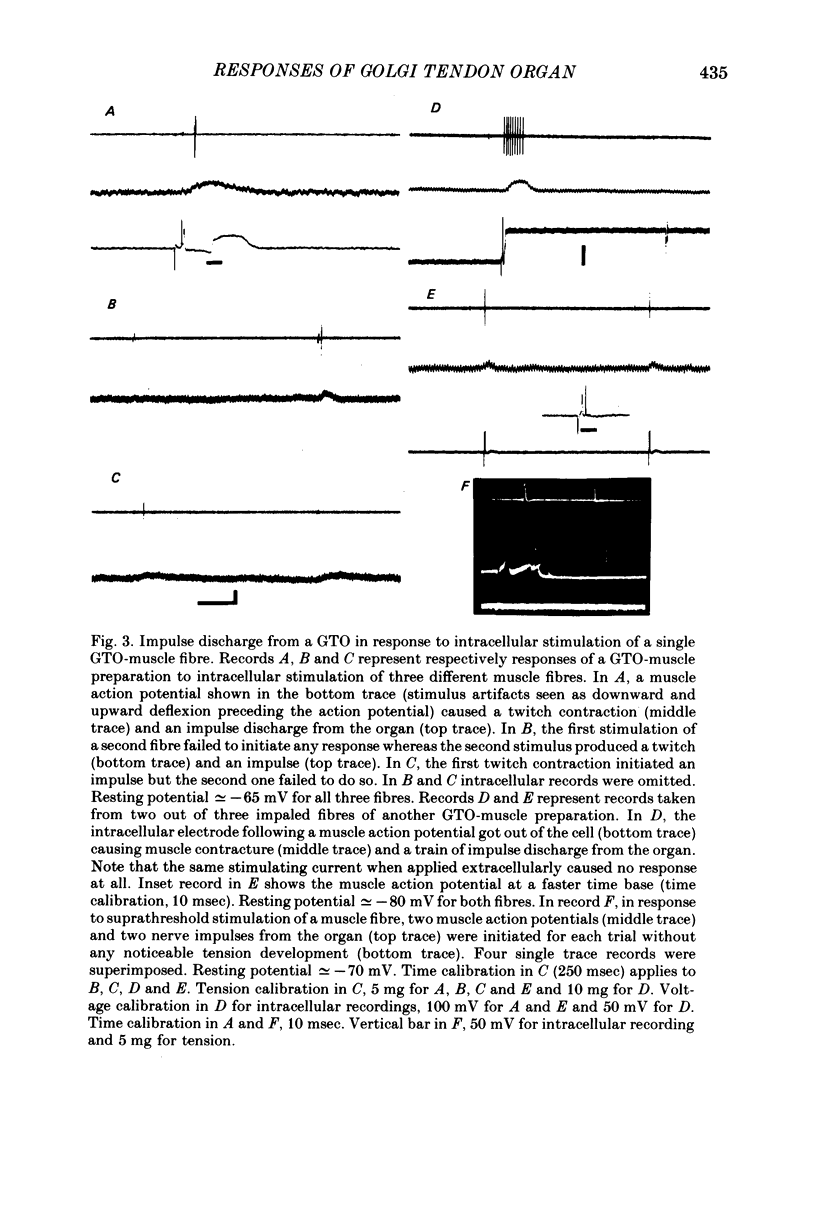
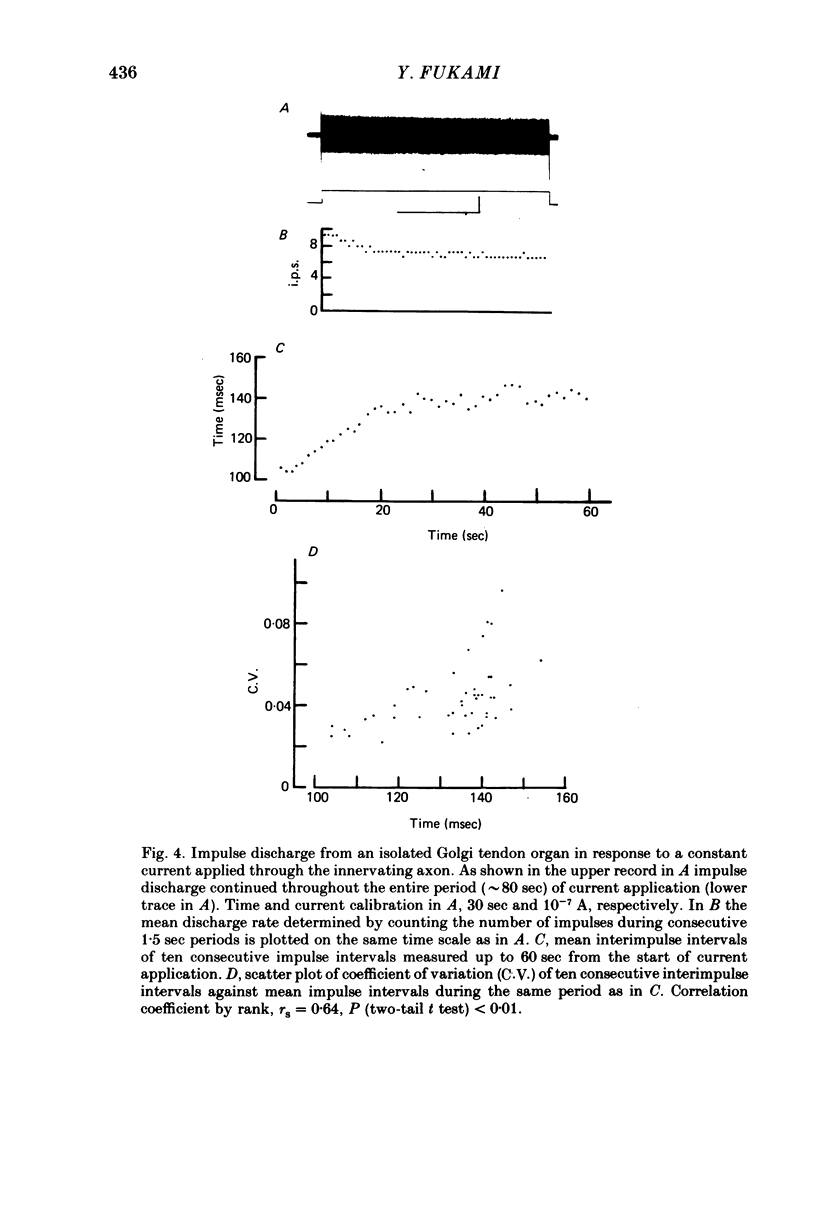
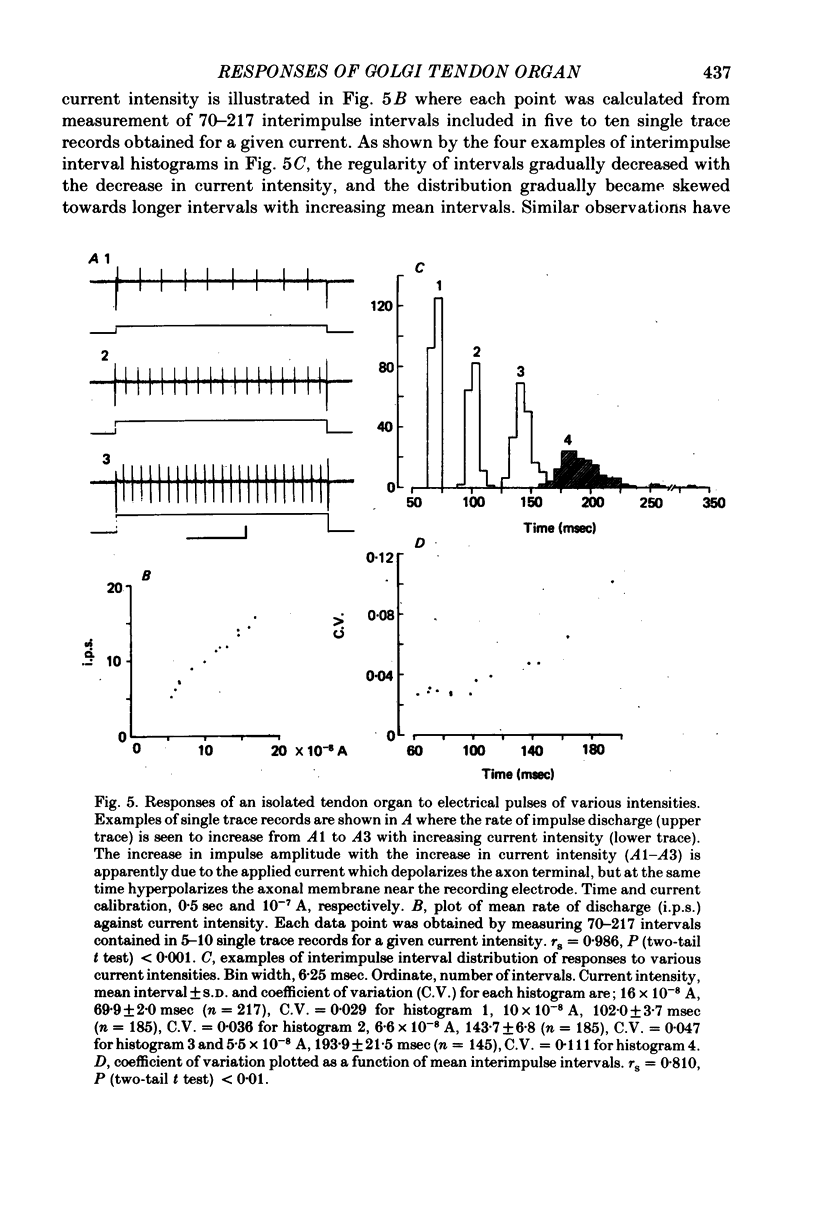
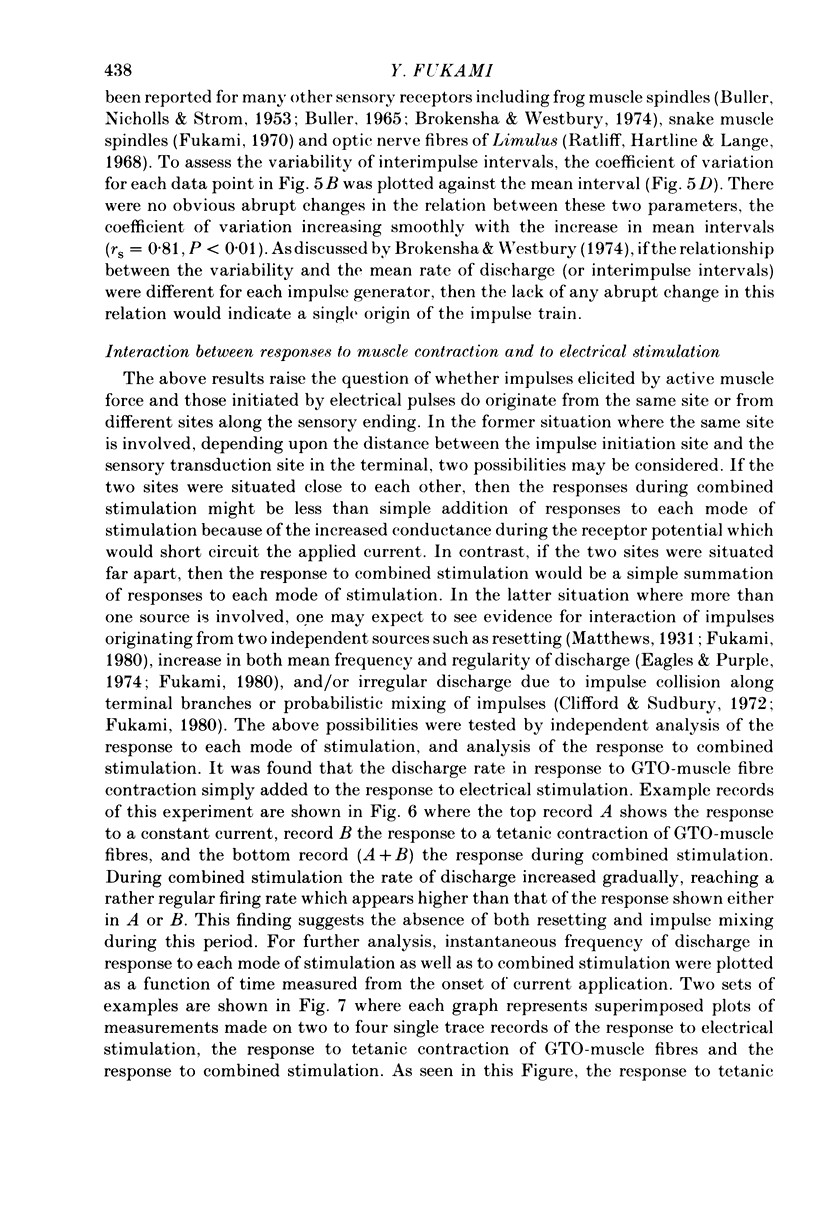
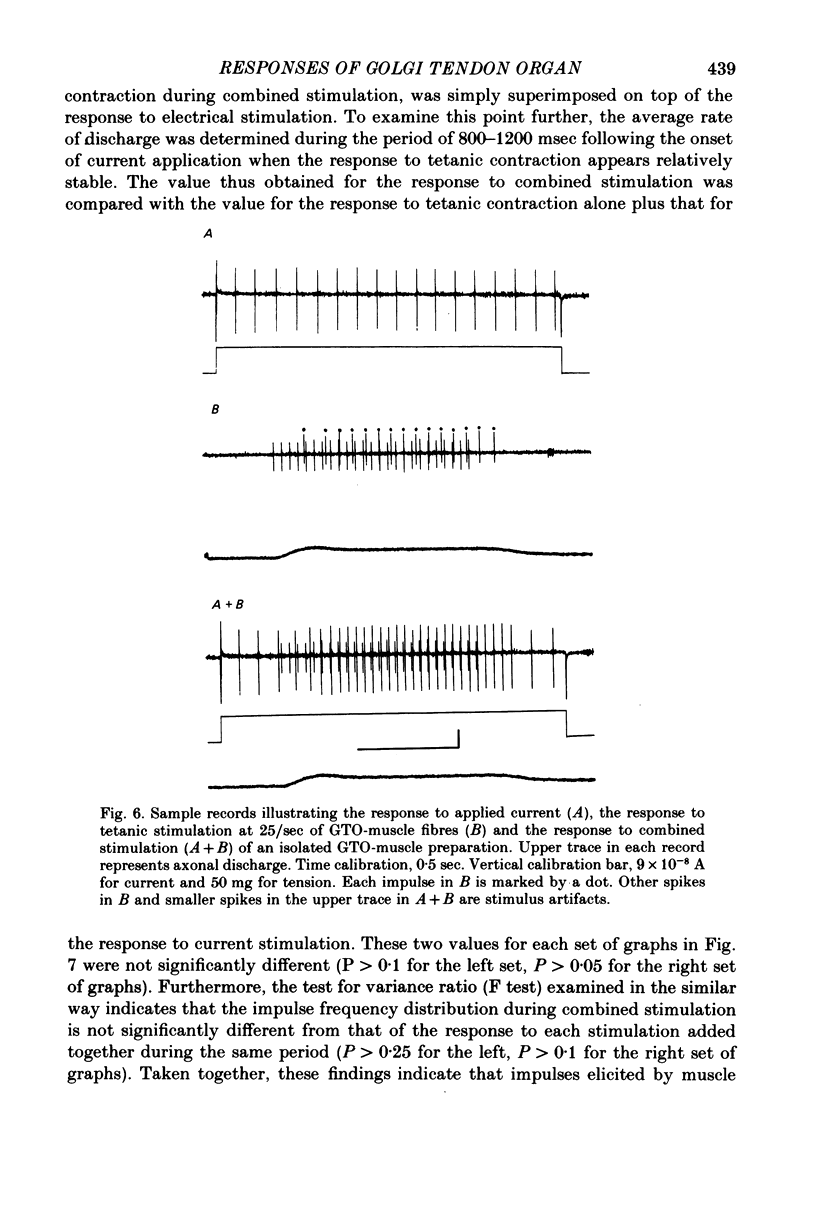
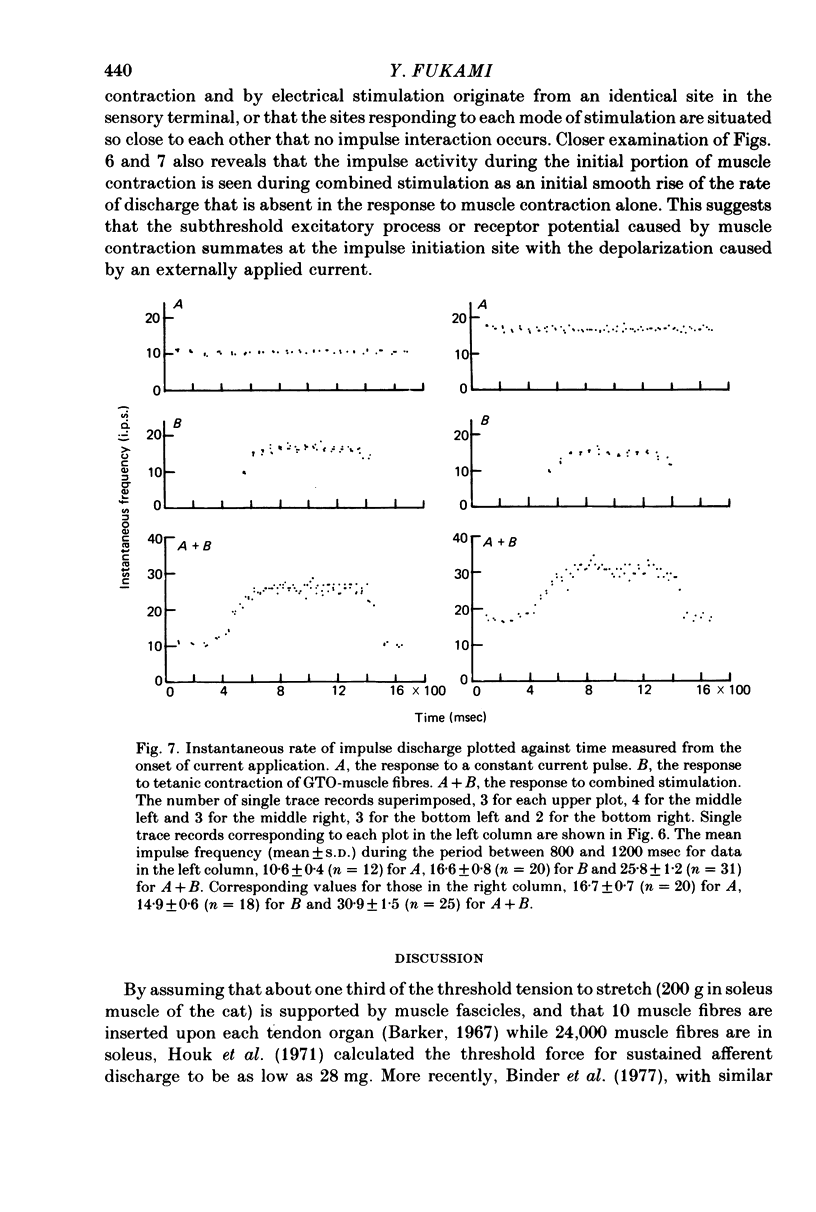
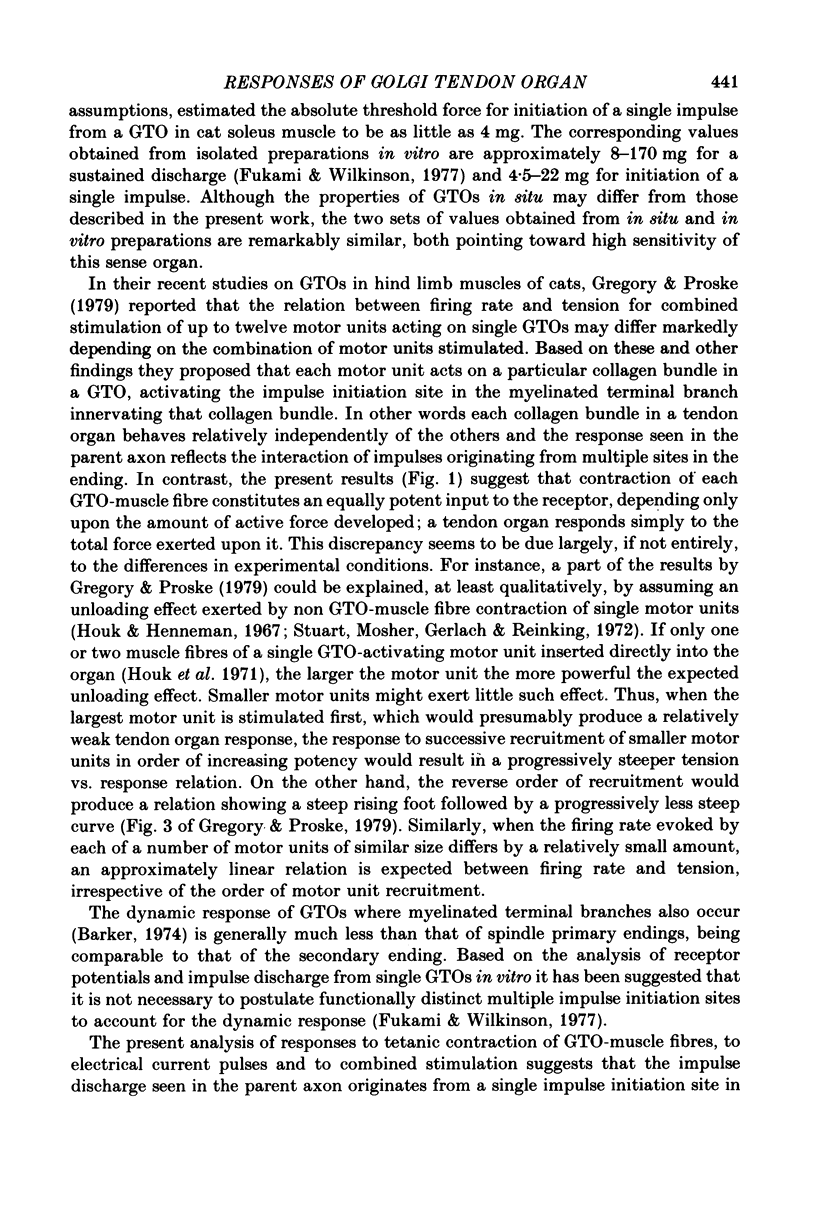
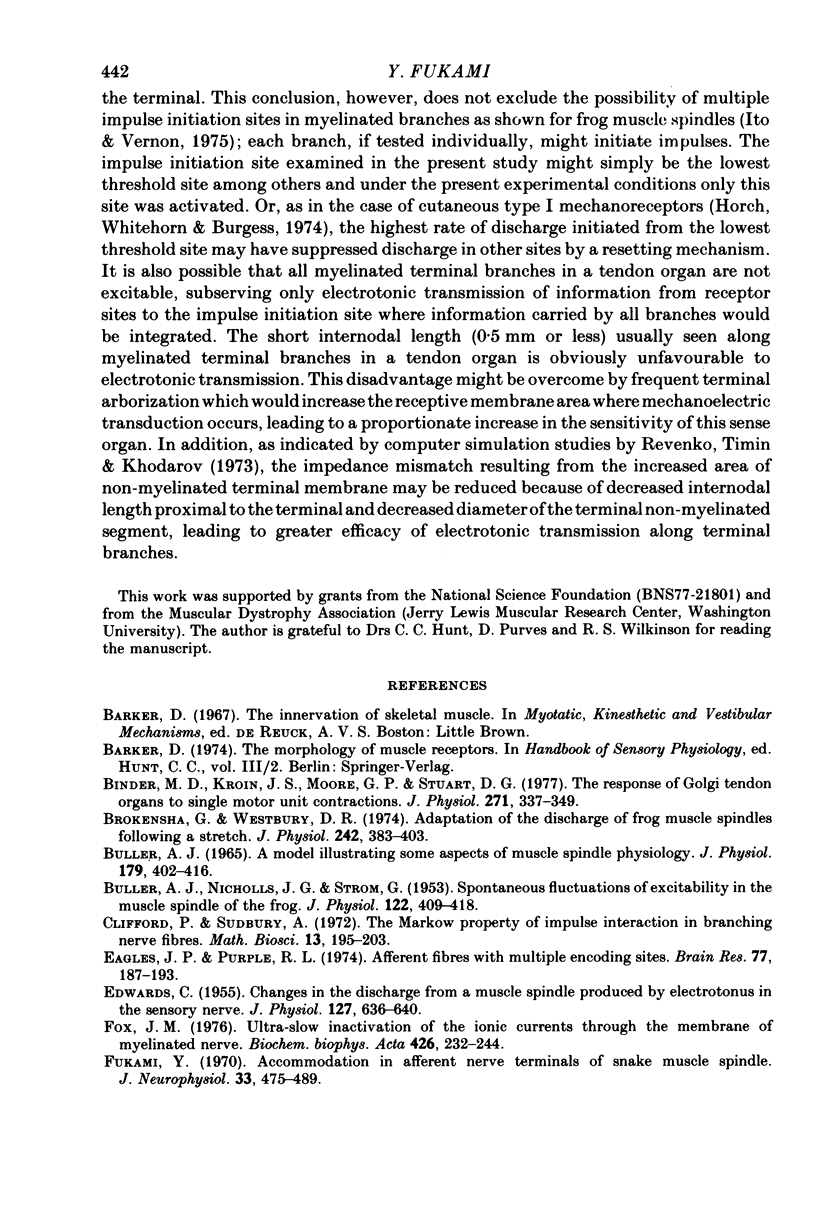
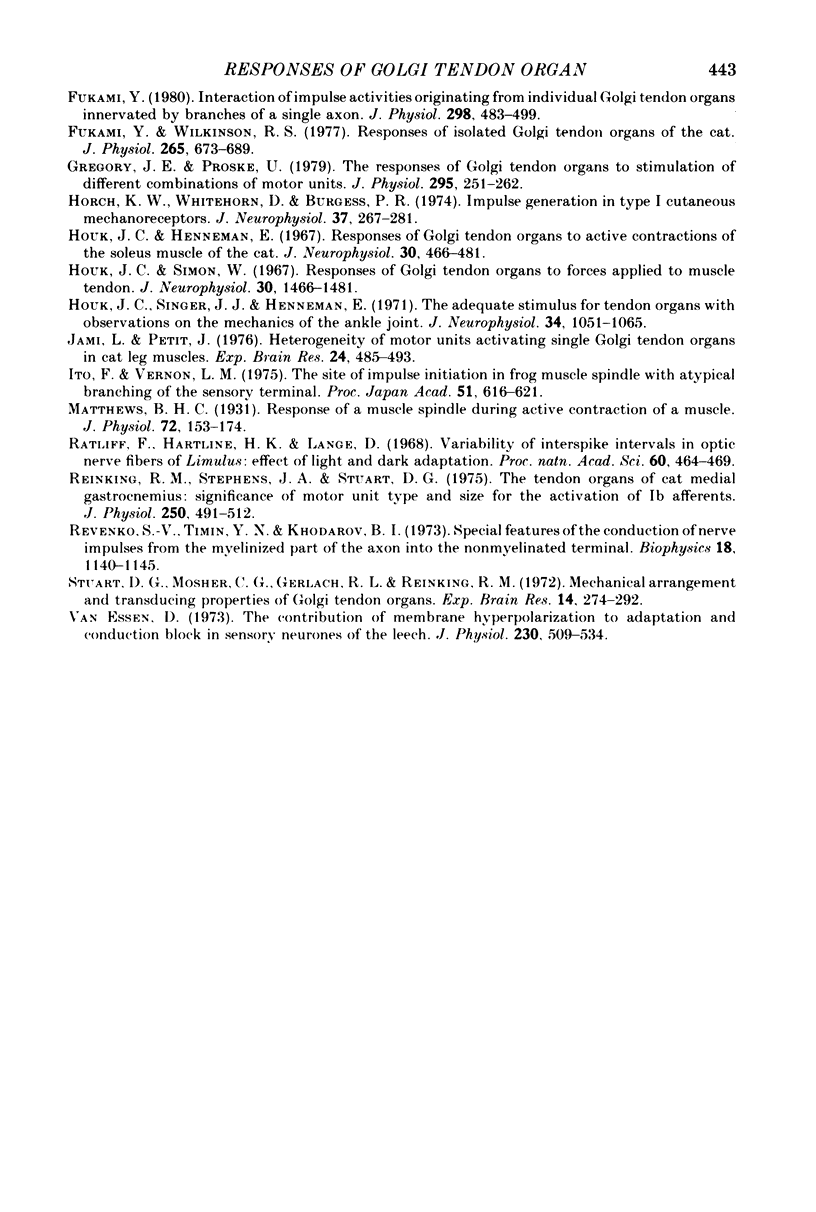
Selected References
These references are in PubMed. This may not be the complete list of references from this article.
- BULLER A. J., NICHOLLS J. G., STROM G. Spontaneous fluctuations of excitability in the muscle spindle of the frog. J Physiol. 1953 Nov 28;122(2):409–418. doi: 10.1113/jphysiol.1953.sp005011. [DOI] [PMC free article] [PubMed] [Google Scholar]
- Binder M. D., Kroin J. S., Moore G. P., Stuart D. G. The response of Golgi tendon organs to single motor unit contractions. J Physiol. 1977 Oct;271(2):337–349. doi: 10.1113/jphysiol.1977.sp012003. [DOI] [PMC free article] [PubMed] [Google Scholar]
- Brokensha G., Westbury D. R. Adaptation of the discharge of frog muscle spindles following a stretch. J Physiol. 1974 Oct;242(2):383–403. doi: 10.1113/jphysiol.1974.sp010713. [DOI] [PMC free article] [PubMed] [Google Scholar]
- Buller A. J. A model illustrating some aspects of muscle spindle physiology. J Physiol. 1965 Aug;179(3):402–416. doi: 10.1113/jphysiol.1965.sp007669. [DOI] [PMC free article] [PubMed] [Google Scholar]
- EDWARDS C. Changes in the discharge from a muscle spindle produced by electrotonus in the sensory nerve. J Physiol. 1955 Mar 28;127(3):636–640. doi: 10.1113/jphysiol.1955.sp005284. [DOI] [PMC free article] [PubMed] [Google Scholar]
- Eagles J. P., Purple R. L. Afferent fibers with multiple encoding sites. Brain Res. 1974 Sep 6;77(2):187–193. doi: 10.1016/0006-8993(74)90783-5. [DOI] [PubMed] [Google Scholar]
- Fox J. M. Ultra-slow inactivation of the ionic currents through the membrane of myelinated nerve. Biochim Biophys Acta. 1976 Mar 5;426(2):232–244. doi: 10.1016/0005-2736(76)90334-5. [DOI] [PubMed] [Google Scholar]
- Fukami Y. Accommodation in afferent nerve terminals of snake muscle spindle. J Neurophysiol. 1970 Jul;33(4):475–489. doi: 10.1152/jn.1970.33.4.475. [DOI] [PubMed] [Google Scholar]
- Fukami Y. Interaction of impulse activities originating from individual Golgi tendon organs innervated by branches of a single axon. J Physiol. 1980 Jan;298:483–499. doi: 10.1113/jphysiol.1980.sp013096. [DOI] [PMC free article] [PubMed] [Google Scholar]
- Fukami Y., Wilkinson R. S. Responses of isolated Golgi tendon organs of the cat. J Physiol. 1977 Mar;265(3):673–689. doi: 10.1113/jphysiol.1977.sp011737. [DOI] [PMC free article] [PubMed] [Google Scholar]
- Gregory J. E., Proske U. The responses of Golgi tendon organs to stimulation of different combinations of motor units. J Physiol. 1979 Oct;295:251–262. doi: 10.1113/jphysiol.1979.sp012966. [DOI] [PMC free article] [PubMed] [Google Scholar]
- Horch K. W., Whitehorn D., Burgess P. R. Impulse generation in type I cutaneous mechanoreceptors. J Neurophysiol. 1974 Mar;37(2):267–281. doi: 10.1152/jn.1974.37.2.267. [DOI] [PubMed] [Google Scholar]
- Houk J. C., Singer J. J., Henneman E. Adequate stimulus for tendon organs with observations on mechanics of ankle joint. J Neurophysiol. 1971 Nov;34(6):1051–1065. doi: 10.1152/jn.1971.34.6.1051. [DOI] [PubMed] [Google Scholar]
- Houk J., Henneman E. Responses of Golgi tendon organs to active contractions of the soleus muscle of the cat. J Neurophysiol. 1967 May;30(3):466–481. doi: 10.1152/jn.1967.30.3.466. [DOI] [PubMed] [Google Scholar]
- Houk J., Simon W. Responses of Golgi tendon organs to forces applied to muscle tendon. J Neurophysiol. 1967 Nov;30(6):1466–1481. doi: 10.1152/jn.1967.30.6.1466. [DOI] [PubMed] [Google Scholar]
- Jami L., Petit J. Heterogeneity of motor units activating single Golgi tendon organs in cat leg muscles. Exp Brain Res. 1976 Mar 15;24(5):485–493. doi: 10.1007/BF00234965. [DOI] [PubMed] [Google Scholar]
- Matthews B. H. The response of a muscle spindle during active contraction of a muscle. J Physiol. 1931 Jun 26;72(2):153–174. doi: 10.1113/jphysiol.1931.sp002768. [DOI] [PMC free article] [PubMed] [Google Scholar]
- Ratliff F., Hartline H. K., Lange D. Variability of interspike intervals in optic nerve fibers of Limulus: effect of light and dark adaptation. Proc Natl Acad Sci U S A. 1968 Jun;60(2):464–469. doi: 10.1073/pnas.60.2.464. [DOI] [PMC free article] [PubMed] [Google Scholar]
- Reinking R. M., Stephens J. A., Stuart D. G. The tendon organs of cat medial gastrocnemius: significance of motor unit type and size for the activation of Ib afferents. J Physiol. 1975 Sep;250(3):491–512. doi: 10.1113/jphysiol.1975.sp011067. [DOI] [PMC free article] [PubMed] [Google Scholar]
- Sturart D. G., Mosher C. G., Gerlach R. I., Reinking R. M. Mechanical arrangement and transducing properties of Golgi tendon organs. Exp Brain Res. 1972;14(3):274–292. doi: 10.1007/BF00816163. [DOI] [PubMed] [Google Scholar]
- Van Essen D. C. The contribution of membrane hyperpolarization to adaptation and conduction block in sensory neurones of the leech. J Physiol. 1973 May;230(3):509–534. doi: 10.1113/jphysiol.1973.sp010201. [DOI] [PMC free article] [PubMed] [Google Scholar]


